Darters — they are tiny, bottom-dwelling members of the perch family, most no longer than your thumb, some decked in dazzling colors. Many have only recently been discovered, and others may still be unknown. About 225 described species exist only in North America, with the greatest diversity in the Southeast U.S.
Five newly described species have been named to honor environmental leadership of four U.S. presidents and a vice president: the highland darter (Etheostoma teddyroosevelt) in the Arkansas highlands; the spangled darter (Etheostoma obama) in the Tennessee River system; the bluegrass darter (Etheostoma jimmycarter) in the Green River drainage of Kentucky and Tennessee; the beaded darter (Etheostoma clinton) in the upper Caddo and upper Ouachita Rivers of Arkansas; and the Cumberland darter (Etheostoma gore) in Kentucky’s and Tennessee’s Cumberland River drainage.
Many of the darters dependent on cool springs and clean substrate are imperiled.

Protecting the Cold Slimy Things
In the 1970s we didn’t worry much about the darters we knew about. One species was even deemed expendable by an act of Congress.
In 1973, 18 weeks before President Nixon signed the Endangered Species Act (ESA), University of Tennessee ichthyologist Dr. David Etnier discovered a new darter in the Little Tennessee River, site of TVA’s Tellico Dam, already under construction.
The “snail darter,” so named because of its diet, was thought to exist nowhere else. So it became a candidate for endangered status.
During the status review, TVA was ordered to suspend dam construction. And in 1975, when the snail darter was listed as endangered, the project was cancelled. Politicians and developers were apoplectic. “We didn’t intend this act to protect cold slimy things, but rather warm fuzzy things like eagles and polar bears,” declared Sen. Howard Baker (R-TN).
When the Supreme Court sided with the fish, Congress responded by amending the act to include a “God Squad” with power to decree that any species could be excised from the planet for human convenience.
So the dam got built. Gates closed November 29, 1979, and the snail darter was written off as just another cost of a project whose costs in dollars and environmental degradation would far outweigh alleged benefits.
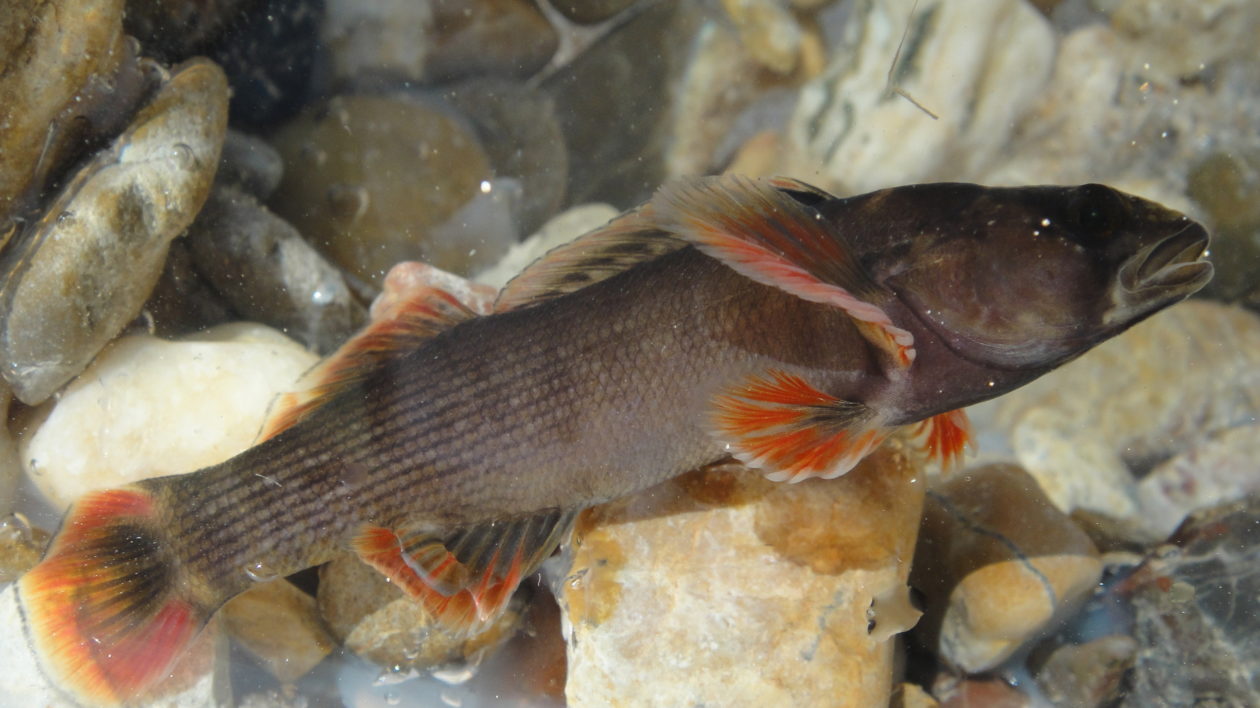
The Most Ambitious Darter Recovery Ever Attempted
Since then there’s been major recovery not just of darters but of American values.
With funding help from the Southwestern Energy Company, a natural-gas firm, The Nature Conservancy and its partners are engaged in the most ambitious darter recovery ever attempted.
After a storm flooded downtown Clinton, Arkansas in 1982 the Army Corps of Engineers converted 3.2 miles of the Little Red River’s Archey Fork to a straight, sterile gutter.
Resulting erosion widened the channelized section from 200 to 800 feet, smothering the streambed with silt and eradicating the endangered yellowcheek darter’s most important sanctuary.
So the Conservancy and its partners are reforesting the floodplain, stabilizing banks by burying logs, and restoring natural meanders by inserting stone “J hooks.”
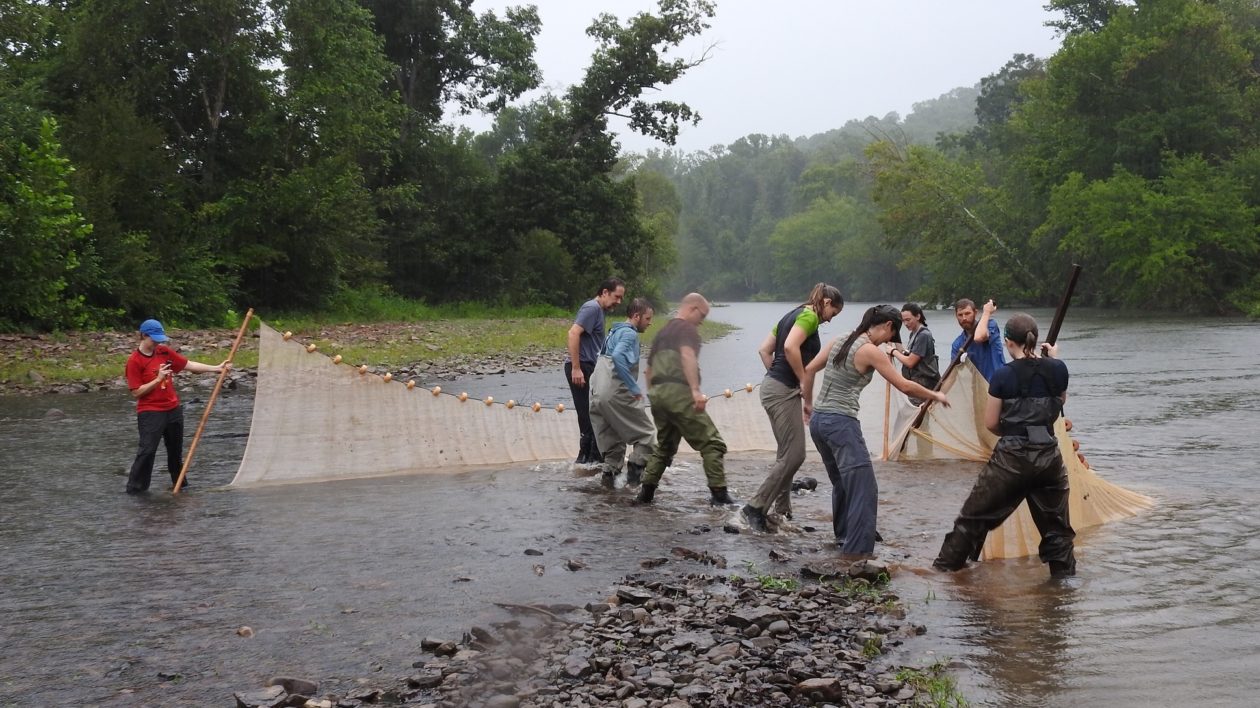
Yellowcheek darters are back and reproducing.
Also benefiting have been public water supply, recreation and all manner of fish and wildlife, including the endangered speckled pocketbook mussel.
So far the partners have restored 2.5 miles of creek. In the final phase they’ll restore another mile.
This from the Conservancy’s Archey Fork recovery leader, Joy Wasson, “This project has been extremely fulfilling for me — seeing the results and benefits to the city park, the local community, and the aquatic life has been a fascinating transformation. Forever now, I’ll visit this place and remember what it looked like before, and appreciate how beautiful it is now, all due to the help of many different people coming together with one common vision — the health of the community and the Archey Fork of the Little Red River.”

A Break Disguised As A Disaster
In the 1970s there was scant hope for the endangered watercress darter, restricted to four tiny, polluted spring runs in and around Birmingham, Alabama. Today extinction seems unlikely.
In 2008 the species received a break disguised as a disaster. Birmingham violated the ESA by breaching a dam sans permit, thereby dewatering a spring pool and killing at least 11,000 watercress darters.
The U.S. Fish and Wildlife Service (USFWS) agreed to drop charges provided the city donate $182,000 to the Freshwater Land Trust for habitat restoration.
With that funding the land trust and its partners, including The Nature Conservancy, have compensated for the fish kill many times over.

“You can’t just let springs go wild,” remarks Dr. Bernie Kuhajda of the Tennessee Aquarium Conservation Institute, another partner. “They’re no longer in a natural environment. Invasive terrestrial plants will come in and block sunlight, killing the aquatic vegetation darters depend on.”
So the land trust and partners inject invasive plants with herbicides.
Other recovery work includes purchasing land, planting native vegetation to reduce erosion and filter stormwater, removing asphalt, and installing bio-retention areas in which urban runoff sits and drops its sediment.
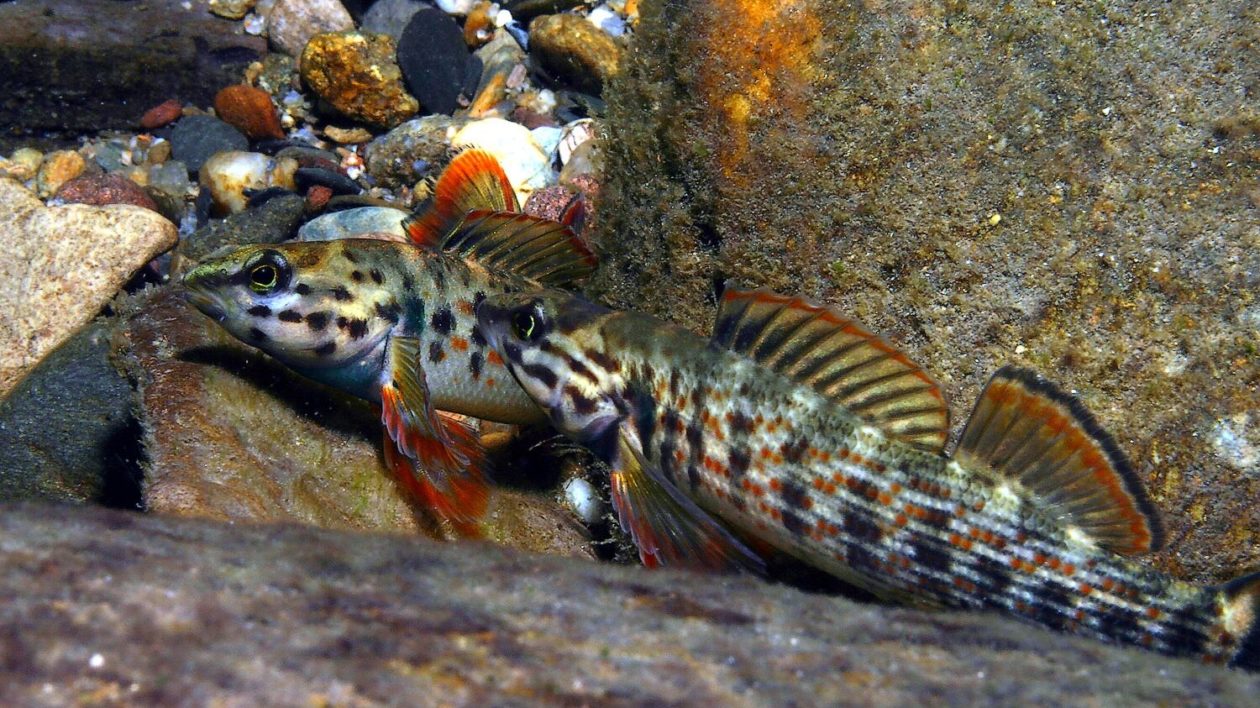
Dam removal done right is essential for darter recovery, and it has benefited the endangered vermilion darter, first described in 1992 and restricted to seven miles of Turkey Creek in Pinson, Alabama, 15 miles north of Birmingham.
In 2013 the land trust and the USFWS removed a century-old dam. This restoration was quickly negated by a 100-year flood that moved Turkey Creek out of its channel and into multiple trickles. But in 2017 the Land Trust and USFWS put the creek back where it belonged. Vermilion darters quickly repopulated a third of a mile of the newly silt-free stretch above the old dam site.
Most of the Turkey Creek corridor from headwaters to the 466-acre Turkey Creek Nature Preserve is now owned and permanently protected by the Land Trust.
The preserve is the result of the vermillion darter’s ESA listing. In the late 1990s Jefferson County had planned a jail for the site, but to protect the fish it agreed to build it elsewhere. The vermilion darter is now Pinson’s mascot.
A new population of the endangered rush darter has recently been discovered at the preserve. This species runs far into headwaters to spawn, so culverts with hanging lips block migration. “There’s a really bad culvert there,” says Jeffrey Drummond, the Freshwater Land Trust’s Director of Stewardship. “With help from the Fish and Wildlife Service and The Nature Conservancy we’ll put in a bottomless culvert.”

A Genetic Roadmap
Dr. Kuhajda and his associates expend much effort on genetic studies and status surveys. “Without a genetic roadmap and knowledge of where these animals live, managers can do more harm than good,” he says. “In the 1980s [before the rush darter was known to exist] the Fish and Wildlife Service moved watercress darters into Tapawingo Spring in the Turkey Creek system. These aliens outcompeted and extirpated the spring’s native rush darters.”
In 2008 the endangered duskytail darter, endemic to the upper Tennessee River drainage in Virginia and Tennessee, was seen to be a composite of four species — the duskytail, Citico, tuxedo and marbled. Had managers translocated what they presumed were duskytails before the genetic study of 2008, they’d have facilitated hybridization, further endangering the four species.

The candy darter, listed as endangered in 2018, has been reduced to 35 populations in Virginia and West Virginia. Like so many other darters it is a victim of pollution, sedimentation, global warming, reduced flows and habitat fragmentation. But its biggest threat is hybridization with the closely related variegate darter illegally superimposed on its habitat, probably by bait anglers.
The endangered relict darter is (and apparently always was) restricted to the Bayou du Chien drainage in western Kentucky, about two-thirds of which has been channelized. It gets damaging runoff from farmland. But the USFWS, via its private-lands program and resulting cattle exclusions, is protecting long stretches of the most populated tributary, Jackson Creek.
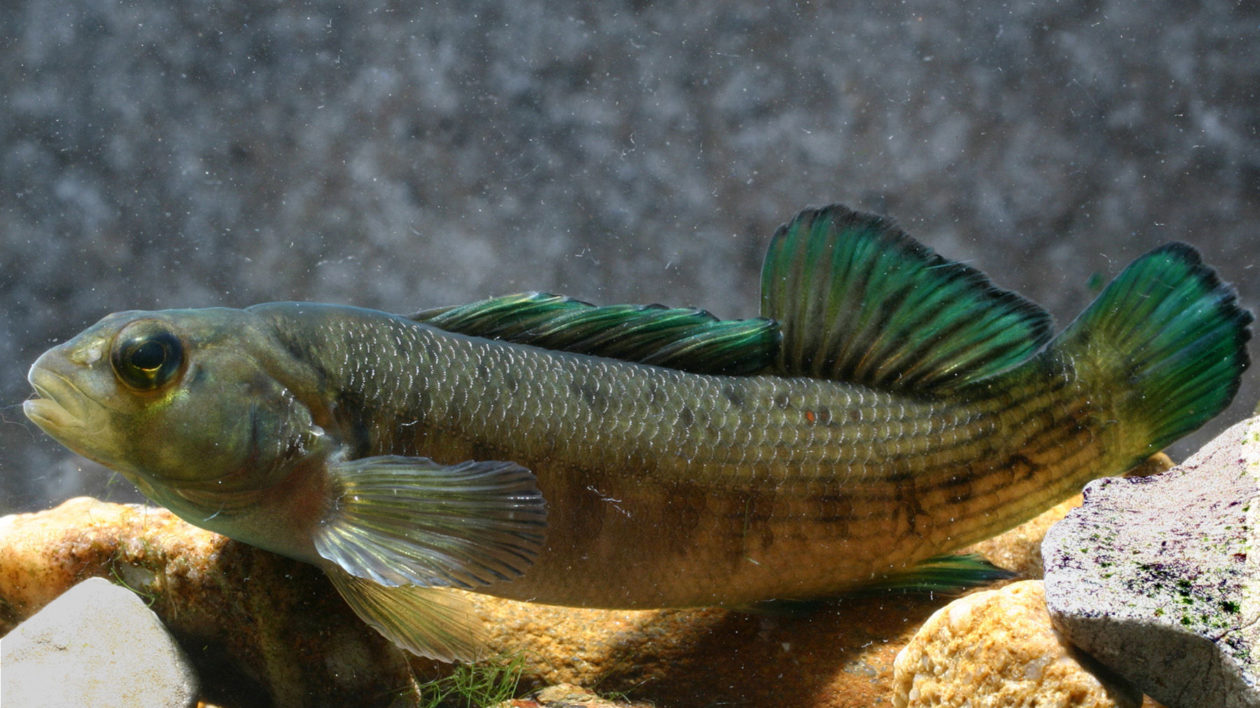
Raising Darters
The threatened trispot darter (Alabama, Georgia and Tennessee) and threatened slackwater darter (Tennessee and Alabama) both migrate high into ephemeral streams to spawn. “For nine months of the year this habitat is often dry,” says Dr. Kuhajda. “So it can easily get developed, plowed up or paved over. The Trump administration proposes to remove Clean Water Act protection from temporary streams, critical for trispot and slackwater darters.”
Not only has the Clean Water Act protected ephemeral streams, it has restored perennial water that had been destroyed by pollution. But habitat fragmentation often prevents fish from repopulating on their own.
Enter the non-profit Conservation Fisheries, Inc. (CFI), based in Knoxville. It raises many species of imperiled fish, darters included, and with USFWS direction reintroduces them to newly viable habitat.
For example, the endangered boulder darter of the Elk River system in Tennessee and Alabama hadn’t been seen in Shoal Creek since the 19th century. Thanks to the Clean Water Act and CFI the species is back and reproducing.
Bluemask darters, native to the Caney Fork River System and Cumberland River basin in Tennessee, are also being raised by CFI. And it is reestablishing them in the now-clean Calfkiller River where they hadn’t been seen since the 1960s.

And About Those Snail Darters…
And what of the snail darter? Today it is alive and well. In fact, it was downlisted from endangered to threatened in 1984. After the Tellico Dam eliminated the species from the Little Tennessee, survey crews found it in two other major tributaries of the main Tennessee River.
Now, because of the Clean Water Act and better flow-management at TVA dams, snail darters are back in the Tennessee River and using it to repopulate feeder streams all the way to Mississippi.
“With The Nature Conservancy we’re looking to remove a dam on South Chickamauga Creek in Georgia,” says Dr. Kuhajda. “Snail darters come right up to the base. We’ve done studies with the Georgia DNR, and it looks like the habitat above the dam is appropriate.”
So far no darter has recovered enough to be ESA delisted. But Dr. Kuhajda thinks the snail darter could be the first.




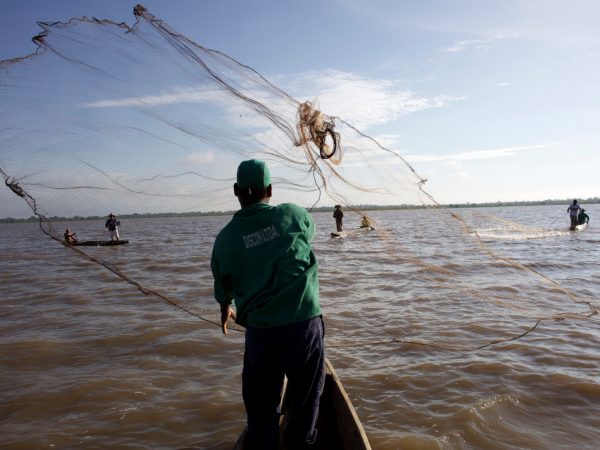
Considering the events of the day, one might wonder if we may one day witness the recovery of the elusive Maralago darter (Etheostoma putinii)….
Apparently, the naming of another newly-discovered darter, the Bravozulu darter (Etheostoma zinkeii subspp. teddyrooseveltwannabe), had to be tabled after its erstwhile namesake resigned amid a cloud of ethics investigations.
Finally, it is with great sadness that we note the untimely extinction of another darter known only briefly to science after its recent discovery in a single small wetland complex on the Oklahoma-Missouri border. Unfortunately, the entire tiny range of the Swamp darter (Etheostoma pruitii), was entombed beneath several million cubic yards of coal ash when a surface impoundment at the Scott&Pals, LLC, Coal Mine breached spectacularly during a bomb cyclone attributed to climate warming.
Thanks Jim. And thanks for what you do for fish and wildlife in WV.
Best,
Ted
In Montana these days (for the last 7 years), but I really enjoyed my short time in WV; some of the most beautiful brook trout streams I’ve ever had the pleasure to roam.
Thanks for what you continue to do – needed now perhaps more than ever.
Excellent write up. Nice photos. More about our non-game stream fishes, please!
Absolutely gorgeous!! Amd appparently the behavior differs too! Understandable decision, Jerry…
What’s going to happen next in YOUR li fe???
The term “American values” can be reinterpreted as a new awareness with the responsibility we all share toward our connections with the environment and species of this planet. I refuse to give in to the fact that we are all doomed and that anything we do going forward is a futile attempt at rearranging the chairs on the Titanic.
If this article proves anything, it is that positive actions can make a difference…however small they may seem.
Keep the faith there Mike and together we can retard the monies vs. values you describe in your comment.
“Since then there’s been major recovery not just of darters but of American values”
Really? The country elected a president, and a government that care not a jot about the environment.
Money seems much more important than values.
Darters are in recovery, but American values? That’s the endangered species now.
Excellent, Ted! Thank-you for all the exposure. And the darters thank you, too.
Funny that we have our own ‘tropical fish’ in our country — time we wake up and realize what a treasure they are.